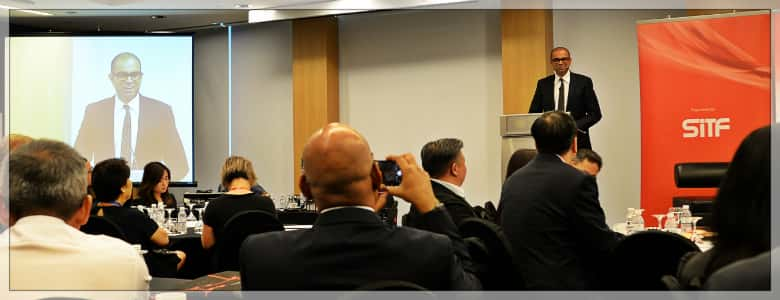Smart Nation Transformation!

The digitalisation of urban life is in now full swing.
Cities the world over are using data analytics, artificial intelligence (AI) and the Internet of Things (IoT) to improve and coordinate a host of public services: Transport, emergency response, payment methods, and water and energy use, to name a few.
Singapore, with its Smart Nation aspirations, is no exception.
But given that digitalisation is a long and complex process, you may have wondered: at what point can a city or a country truly call itself ‘smart’?
For Dr Janil Puthucheary, Senior Minister of State for the Ministry of Communications and Information and the Ministry of Education, and Minister-in-Charge of the Government Technology Agency of Singapore (GovTech), Singapore’s Smart Nation transformation should be seen as a journey — one with no set endpoint or deadline.
“We fully accept that this is an ongoing process of economic, business and public sector transformation, and we’ll have frequent opportunities to redefine what counts as a Smart Nation project,” he said.
“That’s by design. Over time, we want these projects or interventions to become accepted as the normal way of doing things.”
Dr Puthucheary was speaking to an audience of tech industry leaders at the latest instalment of the Singapore infocomm Technology Federation’s (SiTF) CXO Breakfast Talk series, held on 19 July 2017.
A connected island of sensors
To effect this digital change, GovTech, which is part of the Smart Nation and Digital Government Group (SNDGG) formed in May 2017, is hard at work on several national strategic projects, said Dr Puthucheary.
One of these is the Smart Nation Sensor Platform, an island-wide network of IoT-connected sensors that will allow data to be shared across the various government agencies.
With such a platform, data collected by the Public Utilities Board (PUB) from sensors in the water supply could, for example, be used by other government agencies for environmental monitoring or security purposes. Images from the speed cameras used by the Land Transport Authority could also inform city planners about traffic flow patterns over time.
Apart from the sensor platform, Singapore is also planning to push ahead with a unified e-payments system, a robust national digital identification system and a national trade platform, said Dr Puthucheary.
With GovTech, as the implementation agency of the SNDGG, now under the Prime Minister’s Office, digitalisation can take place in a more integrated fashion across the whole of government.
“The structure we have chosen gives you a sense of the type and scale of change we are prepared to undergo, and that we’re hoping our economy will undergo over time.”
Of Singapore’s strengths and sandboxes
In addition to platforms, Singapore is also targeting key areas of technology where it has the potential to excel. One such area is the use of big data to inform AI, said Dr Puthucheary.
Although Singapore’s small population means that it has a relatively small ‘data pool’, it also has one significant advantage: this data pool is extremely rich, complex and interconnected.
“There’s something unique about our public sector data, and we believe there is a competitive advantage in using a very rich, interconnected dataset to train AI and machine learning products,” Dr Puthucheary added.
While the development of new technologies can bring huge benefits, there is also a need to mitigate their potential risks.
Singapore is also in a good position to lead the building of regulatory ‘sandboxes’, delimited spaces within which entrepreneurs can innovate and develop disruptive business models without having to worry about regulatory interference.
This is already being done: one-north and Yuhua, for example, are physical regulatory sandboxes for the testing of autonomous vehicles and smart home technology respectively. Meanwhile, conceptual sandboxes have been put in place around the use of fintech products.
“When we do intervene, we will do so having learnt lessons from what you’ve done,” Dr Puthucheary told the audience.
“You have an incentive to innovate and develop these business practices, because your commitment will have a significant impact on how we develop regulatory clarity over time.”
Bold Opportunities
Asked by moderator Mr Andrew Chow (organising chairman of the Breakfast Talk series and President of ST Electronics (Info-Comm Systems)) to speculate on the next five years, Dr Puthucheary said that the future was almost impossible to predict.
“If we’re being bold enough about each of our national strategic projects in terms of scope, pervasiveness across the whole economy and what we’re trying to deliver, then they should generate lots of opportunities which we can’t imagine today,” he said.
This doesn’t just mean self-driving cars, digital namecards or fancy tablets, he emphasised.
Getting the national strategic projects right will allow for higher-order innovation — enabling end-to-end, secure and authenticated trade finance for example — to happen, thus generating a host of new products, services and jobs across multiple industries.
“If I could predict the future five years from now, I would worry that I haven’t done my job well enough,” Dr Puthucheary concluded.
https://www.tech.gov.sg/media/technews/smart-nation-transformation
